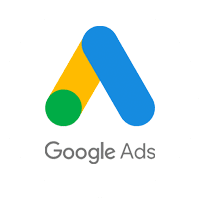Google Ads: A Comprehensive Guide to Successful Online Advertising
In today’s rapidly evolving digital landscape, businesses are constantly seeking innovative ways to reach their target audience and expand their online presence. One such avenue that has gained immense popularity is Google Ads, a powerful online advertising platform offered by Google. In this comprehensive guide, we’ll delve into the world of Google Ads, exploring its features, benefits, strategies, and how it can be harnessed to drive tangible results for businesses of all sizes.

Introduction to Google Ads
Google Ads, formerly known as Google AdWords, is a robust advertising platform that enables businesses to create and display ads on Google’s search engine results pages (SERPs) and across its extensive network of partner websites. This allows advertisers to connect with potential customers precisely when they are actively searching for products or services related to their offerings.
Understanding Google Ads: How It Works
Google Ads operates on a pay-per-click (PPC) model, where advertisers bid on specific keywords relevant to their business. When a user enters a search query matching those keywords, Google’s algorithm triggers an auction, determining which ads will be displayed and their order.
Types of Google Ads Campaigns
Search Ads
Search ads appear at the top of Google search results and are marked as ads. They consist of brief yet compelling headlines and descriptive text, directing users to the advertiser’s website.
Display Ads
Display ads encompass a variety of visual formats, including images, videos, and interactive elements. They are displayed on Google’s partner websites, targeting users based on their interests and online behavior.
Video Ads
Video ads are showcased on YouTube, the world’s second-largest search engine. They offer a dynamic way to engage audiences through captivating video content.
Shopping Ads
Shopping ads highlight products with images, prices, and retailer names. They are particularly effective for e-commerce businesses, driving traffic directly to product pages.
App Promotion Ads
App promotion ads encourage users to download and engage with mobile applications. They can appear across various Google platforms, such as Google Search, Google Play, and YouTube.
Setting Up Your First Google Ads Campaign
When setting up your initial Google Ads campaign, several critical steps should be followed to ensure optimal performance and return on investment.
Defining Campaign Objectives
Before creating your campaign, clearly outline your goals. Are you aiming for brand awareness, website traffic, or lead generation? Defining objectives will guide your campaign structure and optimization strategy.
Keyword Research and Selection
Thorough keyword research is essential. Identify relevant keywords that potential customers might use to find your products or services. Tools like Google Keyword Planner can assist in uncovering valuable keywords.
Crafting Compelling Ad Copy
Write engaging ad copy that highlights the unique selling points of your offering. Use persuasive language, strong calls to action, and keywords that resonate with your target audience.
Setting Budgets and Bids
Allocate a budget for your campaign and set bids for your chosen keywords. Google Ads provides flexible budgeting options, allowing you to control your spending.
Targeting the Right Audience
Utilize Google’s targeting options to narrow down your audience based on factors like location, demographics, interests, and online behavior.
Optimizing Your Google Ads Campaigns
Monitoring Performance Metrics
Regularly monitor key performance indicators (KPIs) such as click-through rates (CTR), conversion rates, and quality scores. Analyzing data helps identify areas for improvement.
A/B Testing Ad Variations
Run A/B tests with different ad variations to determine which elements resonate best with your audience. Experiment with headlines, ad copy, and visuals.
Adjusting Bids and Budgets
Based on performance data, make necessary adjustments to your bids and budgets. Allocate more resources to well-performing keywords and pause or refine underperforming ones.
Refining Keywords
Continuously refine your keyword list by adding new relevant terms and excluding irrelevant ones. This ongoing optimization enhances campaign effectiveness.
Maximizing Conversions with Landing Page Optimization
Designing High-Quality Landing Pages
Create visually appealing and user-friendly landing pages that align with your ad’s message. A seamless transition from ad to landing page improves user experience.
Ensuring Relevance and Cohesiveness
Maintain consistency between your ad and landing page. The messaging, design, and offering should be coherent and relevant, reinforcing your value proposition.
Call to Action (CTA) Optimization
Place clear and compelling CTAs on your landing pages to guide users towards desired actions, whether it’s making a purchase, filling out a form, or contacting your business.
Remarketing Strategies to Boost ROI
The Power of Remarketing
Remarketing allows you to re-engage users who have previously interacted with your website or ads. This targeted approach can yield higher conversion rates.
Creating Effective Remarketing Lists
Segment your audience into different remarketing lists based on their interactions and behavior. Tailor your ads to each segment’s specific interests.
Tailoring Ads for Remarketing
Craft remarketing ads that remind users of their previous interactions and offer incentives to revisit your website or take a desired action.
Mobile-First Advertising on Google
Adapting to Mobile Audiences
Given the prevalence of mobile devices, optimize your ads for mobile users. Ensure that your ad formats and landing pages are responsive and user-friendly.
Mobile-Optimized Ad Formats
Utilize mobile-specific ad formats, such as responsive search ads and mobile app promotion ads, to effectively reach and engage mobile audiences.
Location-Based Targeting
Take advantage of location-based targeting to reach users when they are near your physical store or within a specific geographic area.
Ad Extensions: Enhancing Ad Visibility
Benefits of Ad Extensions
Ad extensions provide additional information and enhance the visibility of your ads. They can include sitelink extensions, callout extensions, and structured snippet extensions.
Types of Ad Extensions
Experiment with various ad extensions to convey more information to users and increase the likelihood of clicks and conversions.
Implementing Ad Extensions
Configure ad extensions that complement your ad’s message and guide users towards relevant sections of your website.
Measuring Success and Analyzing Data
Key Performance Indicators (KPIs)
Identify the KPIs that align with your campaign objectives. Track metrics such as return on ad spend (ROAS), conversion rate, and cost per conversion.
Google Analytics Integration
Integrate Google Ads with Google Analytics to gain deeper insights into user behavior, attribution, and the customer journey.
Iterative Refinement for Better Results
Use the data you gather to make informed decisions. Continuously refine your campaign strategies based on performance insights.
Staying Ahead with Google Ads Updates
Google’s Algorithm Changes
Stay informed about Google’s algorithm updates, as they can impact ad rankings and visibility. Adapt your strategies to align with algorithmic shifts.
Ad Format Evolutions
As Google introduces new ad formats, explore how they can be integrated into your campaigns to capture the attention of your target audience.
Adapting to Market Trends
Monitor industry trends and consumer behavior to anticipate shifts in demand. Adjust your campaigns to remain relevant and resonate with your audience.
Common Mistakes to Avoid in Google Ads
Neglecting Negative Keywords
Failing to include negative keywords can lead to irrelevant clicks and wasted ad spend. Regularly update your negative keyword list to refine targeting.
Ignoring Quality Score
A low-quality score can impact ad visibility and increase costs. Focus on improving ad relevance, click-through rates, and landing page experience.
Failing to Test and Iterate
Successful campaigns require experimentation. Continuously test different ad variations, strategies, and targeting options to uncover what works best.
Conclusion: Unleash the Potential of Google Ads
Google Ads presents a dynamic and results-driven platform for businesses to reach their target audience with precision and impact. By harnessing its diverse ad formats, targeting capabilities, and optimization strategies, advertisers can drive meaningful engagement, conversions, and business growth.

